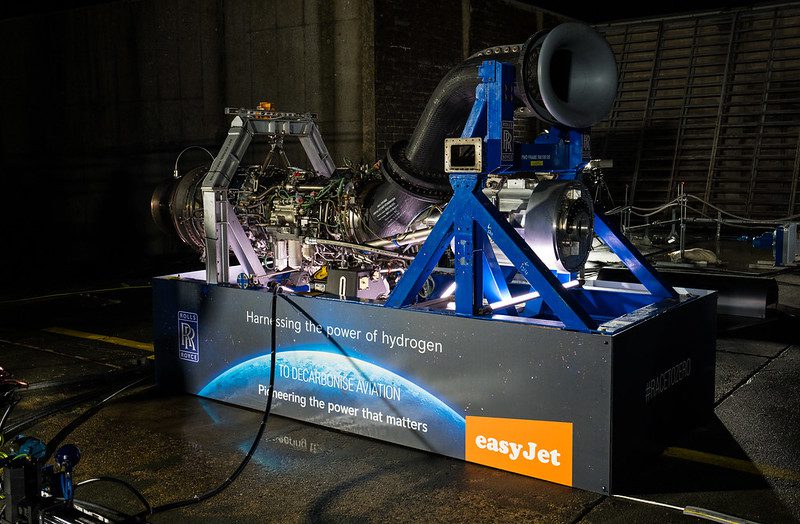
52503837016 ee400ebe79 c
It’s just the first of many tests, but Rolls-Royce has successfully completed testing direct-burn of hydrogen in a modified aircraft engine. A number of tests were done in early November as part of a joint program with easyJet. Rolls-Royce completes first test with hydrogen engine.
The test was run on an AE 2100-A, an engine of which more than 1.800 have been built for use on regional aircraft such as the SAAB 2000 and currently on the Lockheed C-130J Hercules and Alenia C-27J Spartan. The engine was installed on an outdoor facility of the UK Ministry of Defense at Boscombe Down. No details were shared about the duration of the test, although the BBC shared video footage of the engine operating at full thrust.
Chief Technology Officer Grazia Vittadini said in September at a sustainability event of easyJet that Rolls-Royce had already purchased the hydrogen for the test. This is green hydrogen produced from a tidal test facility of the European Marine Energy Center on the Orkney Islands to make sure that the fuel was made from renewable sources.
Rolls-Royce plans more rig tests with the AE 2100 to get a full understanding of the characteristics of hydrogen as it is directly burnt in an engine. Hydrogen burns less stable than conventional jet fuel and there is a risk of flashback, in which the hydrogen that is ignited during combustion seeks its way back through the piping system to the storage tanks. Which is not something you want… Storage itself is another major challenge, as the liquid hydrogen needs to be kept at super cold temperatures of -253 Celsius before it is gasified for combustion in the engine.
Once the rig tests have been completed, Rolls-Royce will progress toward full-scale ground tests on a Pearl 15 business jet engine. It is too early now to tell when the UK engine maker will have an engine available for flight testing. General Electric and Safran will begin ground testing with a hydrogen-powered Passport engine before commencing flight tests on an Airbus A380 test bed in 2026.
Exciting milestone
Vittadini hailed the first ground test as “an exciting milestone”. easyJet CEO Johan Lundgren said: “This is a real success for our partnership team. We are committed to continuing to support this ground-breaking research because hydrogen offers great possibilities for a range of aircraft, including easyJet-sized aircraft. That will be a huge step forward in meeting the challenge of net zero by 2050.” The airline and Rolls-Royce publicly announced a partnership in July at the Farnborough Airshow, with easyJet making an undisclosed investment in the project.
Chief Operating Officer David Morgan told AirInsight in April that easyJet is fully committed to hydrogen and wants to be one of the launch customers of a hydrogen airliner that Airbus is developing. The airframer will be presenting the latest updates on the program on Wednesday during the second Airbus Summit in Toulouse. Rolls-Royce is also putting its full force behind hydrogen, but at the same time is keen on developing more efficient turbofan engines through its UltraFan program as well as investing in hybrid-electric propulsion.
UK Secretary of State for Business, Energy, and Industrial Strategy, Grant Shapps, said the hydrogen project demonstrates that “the UK is leading the global shift to guilt-free flying, and today’s test by Rolls-Royce and easyJet is an exciting demonstration of how business innovation can transform the way we live our lives.”
Views: 9



